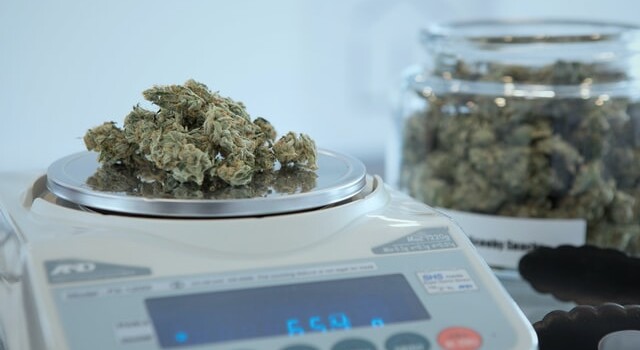Microdosing cannabis means taking smaller doses than usual. It involves finding the dose that still delivers the intended (medical) effects, without the drawbacks of the associated high. Cannabis plants contain many substances that can benefit our health. After all, cannabis is prescribed by doctors for a reason in a growing number of countries. However, not everyone is interested in getting high, or experiencing other undesired effects common in regular use. In such cases, microdosing cannabis can be an option.
Table of Contents
What Is Microdosing?
Microdosing involves consuming smaller doses; usually about one tenth of the regular dosage of psychoactive substances. This usually involves psychedelics such as mushrooms for their active compound, psilocybin. Microdosing is also possible with mescalin and LSD. These days, however, increasing numbers of people seem interested in microdosing cannabis, even though weed is not considered a true psychedelic. Still, cannabis does produce a psychoactive effect at sufficient doses; this is the ‘high’ that can affect perception, cognition, and emotions.
The Microdose: The Effect, But Not The High
Apart from their pshychoactive and psychedelic properties, though, these plants and compounds also produce other effects, including medical ones. Many people are interested in these effects, if only they could avoid the associated high while benefiting from them. That’s where microdosing comes in. This method of consumption enables the use of cannabis (or other substances) for the desired effects, without having to deal with unwanted highs. The trick appears to be finding the right dose.
Back in the nineteen sixties, James Fadiman experimented with a range of different psychedelics. Microdosing was his specific area of interest. He found that taking miniscule amounts of a certain substance can have a subtle influence on one’s physical and mental status – without the psychoactive or psychedelic effects. That means microdosing allows people to keep functioning as usual, without getting high.
The Benefits Of Microdosing Cannabis
Microdosing affects physical and mental health, regardless of the particular substance involved. Most people indicate improved emotional stability and creativity (thinking outside the box seems easier), improved sleeping patterns, and better stress management. Their ability to focus increased as well. They also reported that engaging in social interactions became easier. Among other purposes, microdosing cannabis can be used to alleviate symptoms caused by stress, pain, and sleep-related issues.
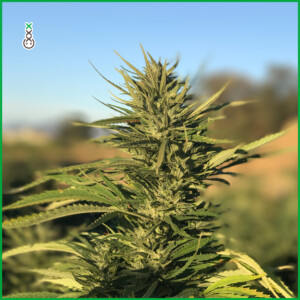
Scientific Study Of Cannabis Microdosing
Microdosing has not been studied extensively to this day. Fadiman himself did collect a wealth of anecdotal evidence provided by microdosers, mentioning all the effects described above. Still, these are all self-reported observations, not solid scientific data.
In a small-scale study of cannabis microdosing, 27 participants suffering from neuropathic pain were tested in a three-day trial. All test subjects received either THC or a placebo for inhalation at 500 or 1,000 microgram. Those who received THC reported significant decrease of pain compared to pre-trial conditions. The 1,000 microgram dose proved particularly effective compared to the placebo.
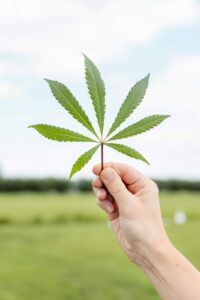
What stood out was the fact that participants did not experience any cognitive impairments at either dose. That is an important difference compared to regular use of cannabis. Washington University’s Alcohol and Drugs Abuse Institute published a paper on the different reactions to higher and lower THC doses.
Dosage Definitely Makes A Difference
In their paper, the authors state that THC can decrease anxiety at low dosages, whereas in higher doses it actually increases anxiety. They quote a study conducted in 2017 by the University of Chicago. In this study, low THC dosages (7.5 mg) reduced the duration of negative emotional responses to a task. In post-trial assessments, subjects regarded stress factors as less threatening and less challenging. By contrast, higher dosages of THC (12.5 mg) caused a minor yet significant increase in anxiety and negative moods prior to psychosocial stress tests.
Microdosing Cannabis, How To Do It
Psychedelic mushrooms, truffles, and LSD usually come with guidelines for daily intake. Cannabis microdosing is different, however. THC tolerance varies greatly between individuals. For one consumer, a single hit serves as a microdose; whereas the next person may need much more for any noticeable effect. This is why everyone should determine their ideal personal microdose for themselves. Moreover, perceived effects differ for everyone. That makes it essential to pay close attention to the effects when determining a personal microdose.
Microdosing Cannabis Edibles
Cannabis can be used in a number of ways. Smoking, vaping, TNC oil, and edibles all differ in their specific effects. Some methods are better suited for microdosing than others. Edibles, for instance, are tricky to dose. THC content varies between edibles and can be difficult to establish precisely. In addition, the effect takes longer to make itself felt, because all THC has to be absorbed through the digestive tract.
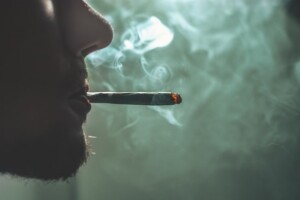
Inhaling: Pros And Cons
Microdosing by inhaling cannabis has the advantage of rapid THC absorption into the bloodstream. In a sense, that makes smoking better suited for microdosing than eating or drinking cannabis. On the other hand, smoking is more harmful for the lungs. Some claim that vaping is a safer alternative, but in recent years, this has become the subject of heated debate.
Buying Or Growing For Microdosing
Depending on where you live and what your local policies are, buying cannabis for microdosing at a coffeeshop or dispensary is an option. The drawback is that as a customer, you depend on quality levels that are hard to ascertain. Even a single strain can vary strongly in potency between batches. That is why growing plants using cannabis seeds is a viable option for microdosing, too. It allows a grower to personally determine which strain produces the intended effect at the right potency. Moreover, growers do not need to rely on availability of specific strains at their preferred vendor.
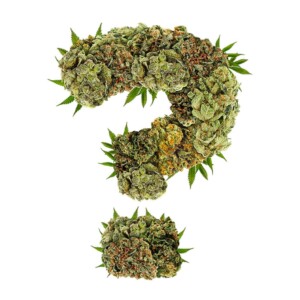
Advice For Anyone Interested In Microdosing Cannabis
If you want to try microdosing cannabis for yourself, proceed with caution. Start out with very low doses and pay close attention to how you respond. A useful tip is waiting for the weekend before you try microdosing. That way, nobody needs to notice if you accidentally take too much, which could be hard to pull off at work. Once you have found your personal cannabis microdose, you can start to establish a microdosing routine. You could consider microdosing daily or every other day, for instance. Timing can make a big difference, too, so trying out different moments throughout the day makes sense as well. Take notes to keep track of your responses. That will help you decide what works best for you.
Always keep in mind that cannabis microdosing can become a slippery slope. Tolerance buildup may not be a big issue with very small doses, but there’s always a risk of a gradual increase in consumption. If you notice that you start need a little more every time you try to reach your microdosing goal, be careful. If you keep using more and more, you’ll eventually lose the advantage of cannabis microdosing: the absence of the high. If you do cross the microdosing threshold, just take a tolerance break of at least one week. After several days of abstinence, you will notice that your sensitivity to THC starts to increase again. This will allow you to continue your microdosing routine responsibly, with minimal doses of cannabis.








